analysis Asia
IndonesiaŌĆÖs US$1b economic stimulus: The smallest package of 2025, but will it pack the biggest punch?
The latest stimulus package contains measures specifically aimed at job creation and addressing inequality, unlike the ones in January and June, observers note.
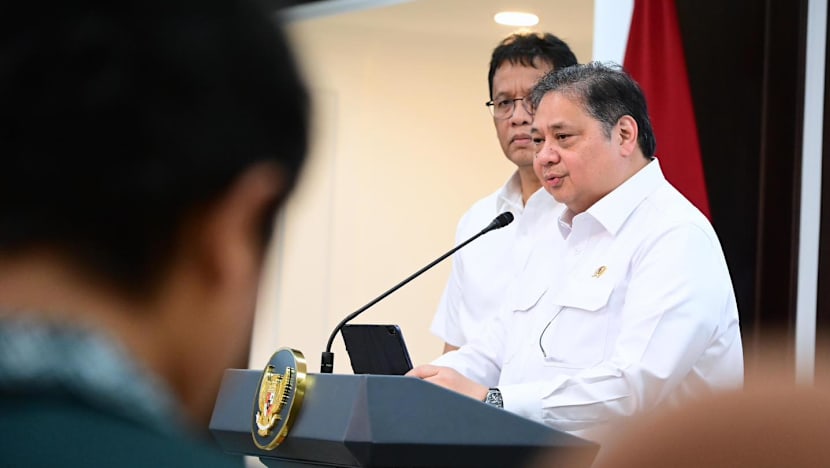
Coordinating Minister for Economic Affairs Airlangga Hartarto (right), accompanied by new Finance Minister Purbaya Yudhi Sadewa, announces Indonesia's third stimulus package of 2025. (Photo: Facebook/Airlangga Hartarto)

This audio is generated by an AI tool.
JAKARTA: IndonesiaŌĆÖs latest stimulus package worth nearly US$1 billion not only aims to fuel economic growth but is also a political gesture to ease public discontent after recent mass protests, analysts said.
Announced on Monday (Sep 15), the 16.23 trillion rupiah (US$989.3 million) package is the third rolled out in 2025, following JanuaryŌĆÖs 33 trillion rupiah boost and another in June valued at 24.4 trillion rupiah.
Though itŌĆÖs the smallest in size this year, observers said it differs from the earlier packages by containing measures specifically aimed at addressing inequality and soaking up labour supply.
For instance, job creation initiatives ŌĆō in the form of an internship programme for 20,000 university graduates, and a cash-for-work scheme for more than 600,000 people from the September to December period ŌĆō can be seen as the governmentŌĆÖs effort to respond to citizensŌĆÖ demands in a more sustainable and measured way than the two previous stimulus packages, they said.
ŌĆ£I see this as a goodwill gesture,ŌĆØ said Deni Friawan, a researcher at the economics department of the Centre for Strategic and International Studies (CSIS) think tank.
ŌĆ£In the past the government was (accused of being) tone-deaf, but now they appear to acknowledge that the economy is slowing and that various problems need to be addressed.ŌĆØ
The impact appeared to be showing already, with a planned protest in Jakarta on Wednesday touted originally to involve up to 5,000 gig workers ending up with a subdued turnout, partly due to gloomy weather.
But even with the latest round of government spending, experts are doubtful Indonesia can achieve its target of 5.2 per cent economic growth this year, given the limited time left and other challenges that must first be addressed.
WHATŌĆÖS IN THE LATEST STIMULUS?
The new stimulus package, set to be implemented from the fourth quarter, was announced by Coordinating Minister for Economic Affairs Airlangga Hartarto, accompanied by IndonesiaŌĆÖs new Finance Minister Purbaya Yudhi Sadewa.
The package is divided into three categories dubbed ŌĆ£8+4+5ŌĆØ: Eight acceleration programmes for 2025, four follow-up economic programmes for 2026, and five job-creation initiatives.
Among the acceleration and job-creation programmes are paid internships for 20,000 university graduates, distribution of 10kg of rice to 18.3 million families, tax relief for certain categories of workers, a 50 per cent subsidy for accident insurance for ride-hailing motorcycle taxi drivers and truck drivers, as well as cash-for-work schemes under various government projects.
The government also aims to add a million jobs through the Red-White cooperatives scheme and the development of fishing villages across the country.
Plans for 2026 include replanting 870,000 hectares of plantations for commodities such as sugarcane, cocoa, coffee, cashew, nutmeg, and coconut, which is expected to create 1.6 million new jobs.
ŌĆ£With this stimulus, we hope government spending can be maintained. We aim to reach the 5.2 per cent growth target by the end of 2025,ŌĆØ Airlangga said at a press conference in Jakarta.
In detail: IndonesiaŌĆÖs new economic stimulus package
Budget: 16.23 trillion rupiah (US$989 million)
8 Acceleration programmes in 2025
- Graduate internships for 20,000 fresh graduates, stipend equal to minimum wage for six months
- Tax relief for 552,000 workers in tourism, hotel, restaurant and caf├® sectors, valid for three months
- Food assistance of 10 kg of rice for 18.3 million households
- 50 per cent insurance subsidies for six months for 731,361 informal workers (ride-hailing motorcycle taxi drivers, couriers and truck drivers)
- Housing loan subsidies for workers, supporting 1,050 housing units
- Cash-for-work schemes employing 609,465 workers
- Deregulation of business licensing through a new government regulation
- Urban development pilot projects for gig economy spaces, starting in Jakarta, expanding to eight provinces
4 Programmes extended in 2026
- A 0.5 per cent final income tax for 542,000 MSMEs has been extended until 2029
- Tax subsidies for tourism workers earning up to 10 million rupiah (US$610) per month
- Tax breaks for 1.7 million workers in labour-intensive industries (footwear, textiles, garments, furniture, leather)
- Expanded insurance subsidies for 9.96 million informal workers (farmers, traders, fishermen, construction and domestic workers)
5 Job creation programmes
- Red-White village cooperatives: 80,000 to be set up, with a target of adding 1 million jobs by December 2025
- Red-White fishermenŌĆÖs villages: 100 sites creating 8,645 jobs in 2025, with the eventual goal of 4,000 sites creating 200,000 jobs
- Revitalisation of aquaculture ponds: 20,000 hectares, creating 168,000 jobs
- Modernisation of fishing vessels: 1,000 new boats, nearly 200,000 jobs
- PeopleŌĆÖs plantation programme: Replanting 870,000 hectares (sugarcane, cocoa, coconut, coffee, cashew, nutmeg), generating 1.6 million jobs in two years
The stimulus is the governmentŌĆÖs attempt to boost purchasing power, particularly for those wedged between the lower-middle class and the economically vulnerable, said Maria Monica Wihardja, a visiting fellow at the ISEAS-Yusof Ishak Institute in Singapore.
The package is also aimed at providing temporary jobs to people struggling to secure permanent work in the formal sector.
ŌĆ£IndonesiaŌĆÖs economy has yet to fully recover its capacity to create quality jobs, especially since the COVID-19 pandemic. Many jobs have been created, but mostly in the informal sector,ŌĆØ Maria told ┬ķČ╣.
Analysts noted the new stimulus package has a broader scope than the previous two.
ŌĆ£In terms of duration, some programmes are planned to run much longer, until the end of 2026, and some even up to 2029,ŌĆØ said Mochammad Faisal, executive director of the Center of Reform on Economics (CORE) Indonesia.
The stimulus packages in January and June included incentives such as transport discounts, social assistance, wage subsidies (BSU) for low-income workers, toll fee reductions, additional rice aid of 10kg for beneficiary families, and discounts on workplace accident insurance for some workers.
This time, the government is seeking to address inequality, particularly through the paid internships and cash-for-work programmes, Faisal said.
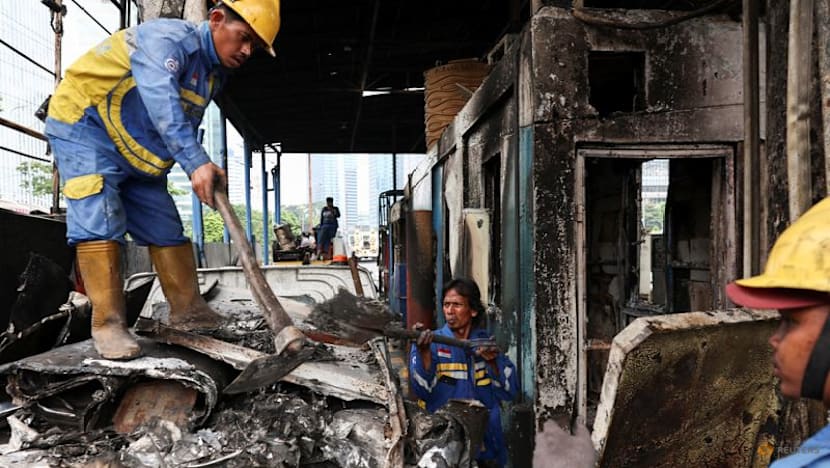
Under the cash-for-work scheme, people are employed in various infrastructure projects run by the Ministry of Transportation and the Ministry of Public Works. The goal is to quickly absorb workers while maintaining the purchasing power of low-income households.
Maria said the cash-for-work stimulusŌĆÖ impact would be felt directly by the community.
ŌĆ£Because the jobs created are ŌĆślow-access, low-skill jobsŌĆÖ that can be taken up by workers without requiring a very high skill level,ŌĆØ she said.
Deni from CSIS said that unlike the two previous stimulus packages, which mainly addressed immediate household needs, this round seeks, through the internship and cash-for-work programmes, to balance labour supply and demand beyond the short term.
With more jobs created, household purchasing power will also rise, said Faisal of CORE.
ŌĆ£Job creation boosts household income. This additional income will, in turn, strengthen purchasing power and improve overall welfare,ŌĆØ he said.
Analysts welcomed pro-poor stimulus measures such as food and cash assistance.
ŌĆ£Vulnerable households often lack the incentives to sustain their purchasing power. Even small economic shocks can push them into poverty. I hope cash aid can also be expanded to reach more beneficiaries,ŌĆØ said Nailul Huda, director of digital economy at the Center of Economics and Law Studies (CELIOS).
Others questioned, however, if certain costs should be borne by the private sector.
The governmentŌĆÖs 50 per cent subsidy of accident insurance covering more than 730,000 ride-hailing motorcycle taxi drivers, truck drivers, couriers, and logistics workers will encourage gig workers to access government programmes and provide social protection for them, said Nailul.
His colleague, CELIOS executive director Bhima Yudhistira, begged to differ.
Arguing that app operators such as Gojek and Grab should bear the cost of accident insurance, Bhima said: ŌĆ£So effectively the government is subsidising ride-hailing platforms? ThatŌĆÖs strange.ŌĆØ
CAN STIMULUS HELP ACHIEVE GROWTH TARGETS?
Analysts also questioned the impact of some stimulus measures and whether they would help the government achieve economic growth of 5.2 per cent for 2025.
The government, for instance, is offering income tax relief for tourism, hotel, restaurant and caf├® workers who earn less than 10 million rupiah per month.
But the majority in the sector earn only about 2.5 million rupiah, a level that is already tax-exempt, Nailul pointed out.
ŌĆ£The monthly non-taxable income (PTKP) is set at 4.5 million rupiah, so I think the impact on the national economy will be minimal,ŌĆØ he said.
The government should instead raise the PTKP threshold so more workers are exempt from tax, leaving them with higher disposable income, Nailul added.
CELIOS has suggested lifting the PTKP threshold to 7 million rupiah a month to boost workersŌĆÖ take-home pay.
ŌĆ£If disposable income increases, the circulation of money in the economy will become the most effective form of stimulus,ŌĆØ Bhima said.
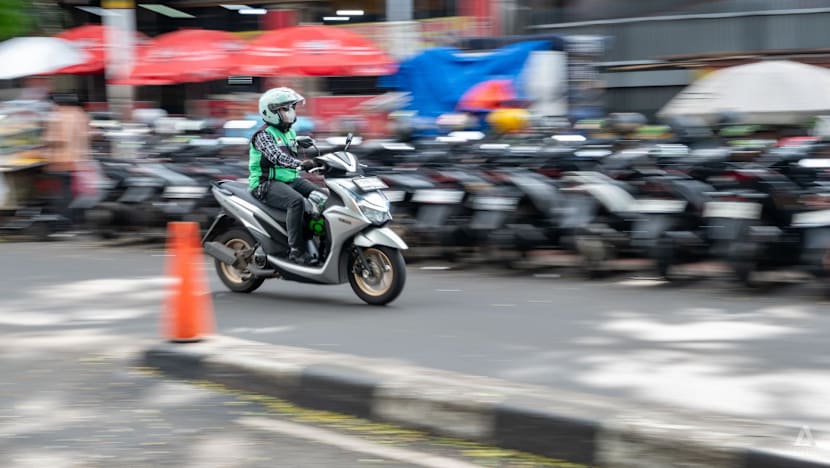
Analysts are also doubtful the government can meet its growth goal of 5.2 per cent for the year.
ŌĆ£In theory it may be possible, but given the limited time left in the year and the scale of the programme, it seems unlikely. (Growth in) the third quarter is expected to decline,ŌĆØ said Deni of CSIS.
IndonesiaŌĆÖs economy, Southeast AsiaŌĆÖs largest, grew 4.87 per cent in the first quarter. Growth in the second quarter was 5.12 per cent, the best rate in two years, but the figure was met with scepticism.
Local media reported that several economists questioned the second-quarter growth figures, saying they did not match real-sector indicators. Some even described the calculations as odd, particularly in the investment and household consumption components.
Then Finance Minister Sri Mulyani, who was sacked by President Prabowo Subianto on Sep 8, urged the public to trust the integrity of IndonesiaŌĆÖs statistics agency (BPS).
New Finance Minister Purbaya projected last week IndonesiaŌĆÖs economic growth would slow in the third quarter, but did not provide figures.
Purbaya told reporters that PrabowoŌĆÖs target of 8 per cent economic growth was ŌĆ£not impossibleŌĆØ, but voiced confidence that 6 to 7 per cent growth was within reach ŌĆö the kind of growth, he said, ŌĆ£that will (make protesters) disappear automaticallyŌĆØ.
ŌĆ£They will be busy looking for work and eating well, rather than protesting,ŌĆØ he said.
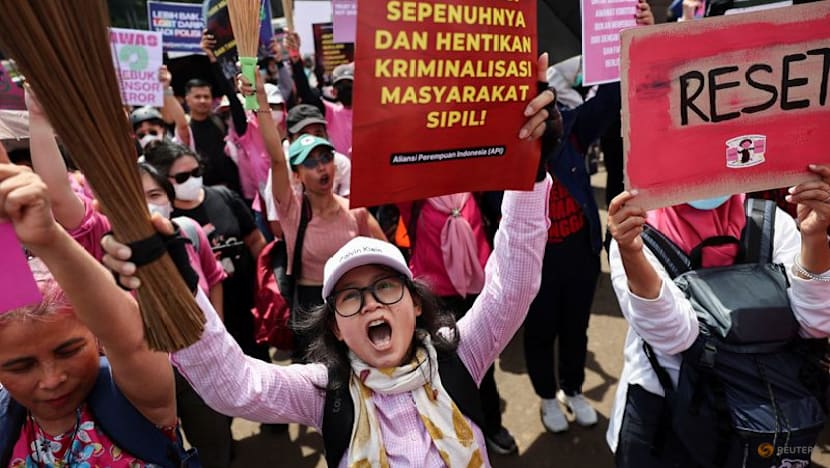
Faisal from CORE said IndonesiaŌĆÖs fourth-quarter growth is more realistically expected to fall below 5 per cent. ŌĆ£Our projection is 4.6 to 4.8 per cent,ŌĆØ he said.
Nailul noted that the first two stimulus packages, despite larger budgets, had little effect on household consumption. This suggests the impact of this smaller, broader package will also be limited, he said.
Observers also raised concerns about how the new stimulus programmes would be financed, with Faisal warning against widening IndonesiaŌĆÖs fiscal deficit.
Indonesia had on Jul 1 revised its fiscal deficit outlook for 2025 to 2.78 per cent of gross domestic product, up from 2.53 per cent.
Then-finance minister Sri Mulyani cited the need to finance key government programmes aimed at addressing the impact of a volatile global market.
The 2.78 per cent figure represents the highest fiscal deficit for Indonesia since 2021, when the country was dealing with the fallout from the global pandemic, Reuters reported. The legal limit set by Indonesia for fiscal deficits is 3 per cent.
Finance Minister Purbaya has dismissed the concern, saying the stimulus is meant to optimise existing budget allocations.
ŌĆ£The largest component is the 10kg rice aid programme, worth around 7 trillion rupiah. The funds are already available and have been prepared. It doesnŌĆÖt mean the deficit will widen,ŌĆØ Purbaya said on Monday, without specifying where the funds were sourced.
Beyond fiscal arithmetic, analysts say the more pressing question is the quality of IndonesiaŌĆÖs growth.
While the government understandably wants rapid expansion, what matters more is how inclusive and sustainable that growth will be, said Maria.
ŌĆ£Are there trade-offs to be made in pursuing faster growth? Such as fiscal discipline and prudence, central bank independence, and private sector dynamism. Are there groups that risk being left behind? These are more important than focusing on a single indicator,ŌĆØ Maria said.
STIMULUS MEASURES CANŌĆÖT STAND ALONE, SAY OBSERVERS
MondayŌĆÖs stimulus package comes in the wake of mass protests that erupted last month over police violence and lavish allowances for lawmakers.
It follows PrabowoŌĆÖs Cabinet reshuffle last week, in which five ministers including Sri Mulyani were removed and a new ministry set up to oversee the haj and umrah Islamic pilgrimages.
Analysts earlier said the ministers removed were those who had incurred public anger and were linked to former presidents.
The stimulus can be viewed as part of the governmentŌĆÖs effort to ease public unrest amid ongoing economic and security challenges, said Agung Baskoro, a political analyst at the think tank Trias Politika Strategis.
ŌĆ£This step is important, not only to calm discontent but also to foster public confidence in the government,ŌĆØ Agung said.
The economic stimulus was necessary because urgent issues such as declining purchasing power, unemployment, and the threat of layoffs demanded a government response, he added.
ŌĆ£The economy is about peopleŌĆÖs livelihoods. If it is not addressed quickly, it will be even more dangerous,ŌĆØ Agung said.
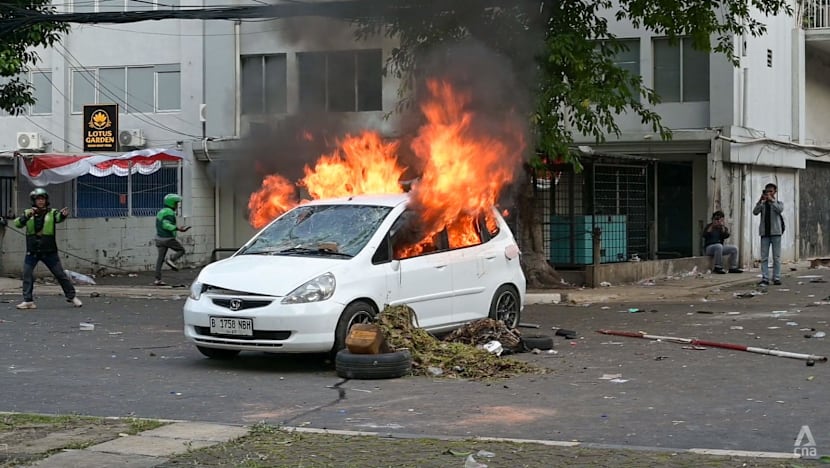
While the stimulus measures may not answer all of the publicŌĆÖs demands, they at least show the government is no longer ŌĆ£tone-deafŌĆØ, CSISŌĆÖ Deni said. ŌĆ£At the very least, there are now concrete policies aimed at addressing these concerns.ŌĆØ
The success of the governmentŌĆÖs stimulus will depend on how well they are implemented on the ground, economists said.
Faisal of CORE argued that the package cannot stand alone and requires supporting policies. For example, the replanting programme should not only provide seedlings, but also include mentoring, training, and channels to sell the harvest.
ŌĆ£There must be complementary policies that take the broader ecosystem into account,ŌĆØ Faisal said.
Deni pointed to potential hurdles such as bureaucracy, data readiness and oversight at the local government level.
Unlike the two previous stimulus packages, which were focused more on short-term incentives, he said, this one is about sustainability. ŌĆ£For instance, the cash-for-work programme will be carried out by local governments,ŌĆØ Deni said.
ŌĆ£The key lies in infrastructure readiness, as well as coordination and communication between local and central government.ŌĆØ
The internship programme, which will pay the equivalent to the provincial minimum wage to 20,000 university graduates, is ŌĆ£very positiveŌĆØ as it can boost the income of unemployed middle-class graduates and Gen Z jobseekers, Nailul said.
ŌĆ£The issue is what happens after the internship ends,ŌĆØ he said.
ŌĆ£Will there be a guarantee that they continue into permanent jobs, or will companies simply look for new interns to pay less?ŌĆØ
Nailul hopes it can be expanded to vocational school graduates, who are specifically trained to be ready for employment.
The government needs to create quality jobs in Indonesia by also improving the investment and business climate to attract investors in labour-intensive sectors, Maria said.
ŌĆ£ThereŌĆÖs a lot of homework to be done here, including regulatory and legal certainty and restoring or maintaining investor confidence amid IndonesiaŌĆÖs political turbulence,ŌĆØ she said.















